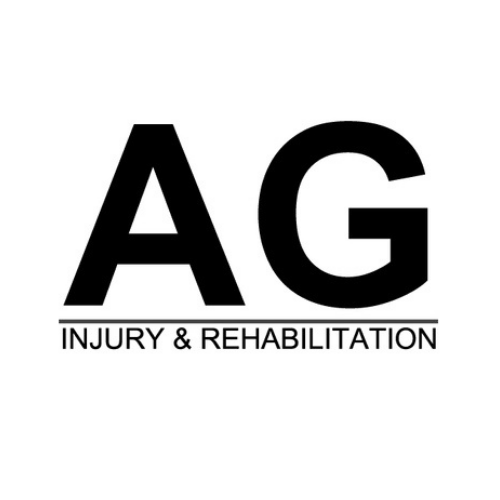Every 10 minutes, someone searches online for answers about tendon pain. While most of us rarely think about our tendons until they hurt, these remarkable connective tissues handle forces up to 17 times our body weight during simple activities like running or jumping.
From weekend warriors to office workers, tendonitis affects millions of people each year, progressing through distinct stages that can make or break recovery. Understanding these stages isn't just medical trivia – it's the key to preventing a minor annoyance from becoming a chronic condition that disrupts daily life.
What is Tendonitis?
Tendonitis occurs when tendons - the thick, rope-like tissues connecting muscles to bones - become inflamed. This common musculoskeletal condition affects many people, particularly those who play sports or work in jobs with repeated movements.
While similar to arthritis, tendonitis specifically targets tendons rather than joints. It's one of two main types of tendon problems, alongside tendinosis, and can develop in various body parts. Athletes, office workers, and manual laborers often experience tendonitis symptoms due to repetitive motions and sudden injuries.
The condition ranges from mild discomfort to severe pain that limits daily activities. Understanding tendonitis helps identify early warning signs and take action before the condition worsens.
Causes and Risk Factors for Tendonitis
Tendonitis typically starts with repeated minor injuries or sudden acute trauma to the tendon. Age plays a key role, as tendons become less flexible over time, making them more prone to injury.
Many cases stem from workplace activities. Jobs that demand constant movement, awkward positions, or overhead reaching put extra stress on tendons. Similarly, sports like tennis, golf, and running create repeated strain through consistent motions.
Medical conditions can also increase tendonitis risk. People with acute inflammatory response conditions, kidney diseases, or rheumatoid arthritis face higher chances of developing tendon inflammation. Using proper equipment, taking regular breaks, and maintaining good form during activities helps reduce the likelihood of tendon problems.
Stage 1: Acute Inflammation
Stage 1 tendonitis, also known as reactive tendinopathy, marks the initial response to tendon injury. During this phase, patients experience pain after intense activity, but discomfort usually stops when movement ceases. Most people can still exercise for tendinopathy without major issues.
This early stage often results from sudden increases in physical activity or direct trauma, like falling on a knee or shoulder. The body responds with inflammation to protect and begin healing the affected tendon. While symptoms may feel concerning, this stage typically responds well to basic care methods like rest, ice application, and over-the-counter pain medication.
Stage 2: Chronic Pain / Tendon Dysrepair
When tendonitis advances past the initial inflammation stage, it enters a "failed healing" phase marked by ongoing pain and tissue changes. During this stage, pain typically continues for several hours after physical activity stops. The tendon becomes more likely to suffer damage due to changes in its structure.
Many patients notice increased stiffness and weakness in the affected area. Daily tasks become harder as pain intensity grows. This stage often develops when early symptoms aren't properly addressed or when people continue activities without adequate rest.
Physical therapy plays a key role in treatment at this point. Specific stretches and exercises help restore tendon function, while activity changes prevent further damage. Without proper care, the condition may progress to more serious stages.
Stage 3: Degenerative Tendinopathy
Stage 3 represents the most severe form of tendon damage, marked by significant tissue breakdown and structural changes. Pain becomes intense during physical activity and often continues for days afterward, making normal daily tasks difficult. At this stage, the tendinosisshows extensive changes in its cellular makeup and becomes highly susceptible to tears or ruptures.
For working adults and athletes, this phase typically prevents normal function and requires medical attention. The pain may appear even during light activities or rest. Treatment often includes a combination of physical therapy, activity modification, and medical interventions. Some patients benefit from specialized treatments like platelet-rich plasma injections or focused exercise programs designed to rebuild tendon strength gradually.
Stage 4: Recovery and Rehabilitation
The final stage of tendonitis marks the return to normal activities, though progress varies among patients. During this phase, pain gradually decreases as the tendon heals and strengthens through targeted exercises.
A structured rehabilitation program typically includes specific strength training exercises and careful monitoring of activity levels. Patients start with basic movements and slowly add more challenging activities as symptoms improve. Physical therapists often guide this process, adjusting exercises based on individual progress.
Success in this stage depends heavily on following treatment guidelines and avoiding rushing back to full activity too quickly. Most people can return to their regular activities, but some may need to adjust their technique or modify movements to prevent future problems.
Diagnostic Methods for Tendonitis
Healthcare professionals use several tools to assess tendon injuries accurately. During initial visits, doctors conduct physical examinations and ask about symptoms, including pain patterns and activity history.
Medical imaging plays a central role in confirming diagnoses. Johns Hopkins Medicine provides detailed views of tendon structure and helps identify specific areas of damage. Ultrasound offers real-time images of tendons and surrounding tissues, making it particularly useful for examining movement-related problems.
These diagnostic methods help doctors determine the severity of tendon damage and create appropriate treatment plans. The results guide decisions about whether conservative treatments like rest and ice will suffice or if more advanced interventions are needed.
Conservative Treatment Options
Most tendonitis cases respond well to basic treatment methods. Rest and activity changes give tendons time to heal, while ice reduces swelling in the first 24-48 hours after injury. Heat therapy helps later, improving blood flow to support healing.
Over-the-counter medications like ibuprofen and naproxen help manage pain and inflammation. However, these should be used short-term while the tendon heals. Physical therapy forms a key part of recovery, with specific exercises strengthening the affected area and improving flexibility.
Physical therapists often start with gentle stretches before adding resistance training. They teach proper movement patterns to prevent future strain. Regular movement breaks and ergonomic adjustments at work or during sports activities support the healing process.
Advanced Treatment Options for Persistent Cases
When basic treatments don't provide relief, doctors may suggest steroid injections. These shots reduce inflammation and pain quickly, though their effects typically last a few months. Medical professionals often limit the number of injections to prevent potential tendon weakening.
Shock wave therapy works well for cases involving calcium deposits. This treatment sends pressure waves through the skin to stimulate healing in the affected tendon. While some patients report mild discomfort during treatment, the procedure requires no incisions.
For ongoing tendon problems, some doctors recommend platelet-rich plasma (PRP) therapy. This treatment uses a patient's own blood components to promote healing. The process involves taking a blood sample, processing it to concentrate the platelets, and injecting the resulting solution into the damaged tendon area.
Surgical Interventions for Severe Cases
Surgery becomes an option when conservative treatments fail to provide relief after several months. Doctors typically recommend surgical intervention when patients experience persistent pain, limited movement, or decreased strength that affects daily activities.
Common surgical procedures include tendon repair, which fixes tears or removes damaged tissue. For cases with significant inflammation, doctors may perform tendon release surgery to reduce pressure on the affected area. Some procedures use small incisions and cameras (arthroscopic surgery) to minimize recovery time.
Recovery from tendon surgery usually takes 4-6 months. The first few weeks focus on protecting the repair site, followed by gradual movement exercises. Physical therapy starts once initial healing occurs, helping patients regain strength and flexibility. Most people return to normal activities within 6-12 months, though athletes may need additional time before resuming competitive sports.
Prevention Strategies for Tendonitis
Good equipment and proper form play vital roles in preventing tendon injuries. Wearing appropriate shoes and using correctly sized gear reduces strain on tendons during activities. For athletes, building up training intensity slowly allows tendons to adapt to increased workloads.
Taking frequent breaks during repetitive tasks helps tendons recover. Office workers should step away from keyboards regularly, while athletes benefit from rest days between training sessions. Simple stretches before and after activities keep tendons flexible.
Strengthening muscles around tendons provides better support and stability. Exercise for tendinopathy programs targeting these supporting muscles reduce strain on tendons during daily activities. When pain occurs during any movement, stopping the activity prevents further damage and gives tendons time to recover.
Long-term Management and Prognosis
Managing tendonitis over time requires a balanced approach to activity and rest. Most people recover fully with proper treatment, though healing times vary based on injury severity and location. Regular stretching and strengthening exercises help maintain tendon health and reduce chances of future problems.
Some individuals experience occasional flare-ups, particularly during intense physical activity or prolonged repetitive movements. These episodes typically respond well to the same treatments used for initial recovery. Johns Hopkins Medicine recommends maintaining good posture, using proper techniques during activities, and staying active within comfortable limits helps prevent recurring symptoms.
The outlook remains positive for most tendonitis cases when patients follow treatment plans and make necessary lifestyle adjustments. While complete prevention isn't always possible, early recognition of symptoms and prompt treatment leads to better outcomes.
The Road to Recovery: Understanding Your Journey
Navigating the stages of tendonitis requires patience, understanding, and proper medical guidance. While the path from acute inflammation to full recovery isn't always straightforward, recognizing where you are in the progression helps make informed decisions about treatment and activity levels.
Remember that recovery isn't just about healing – it's about building resilience for the future. By combining proper treatment with preventive strategies, most people not only overcome tendonitis but emerge stronger and better equipped to maintain long-term tendon health.

